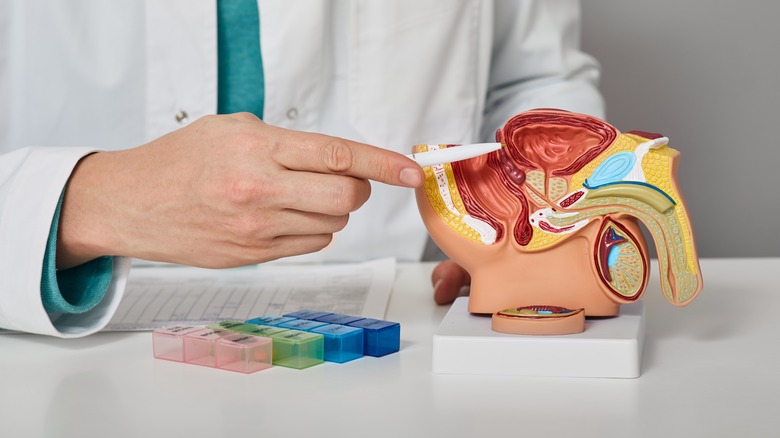Can Combining Treatments For Prostate Cancer Improve Survival Rates?
Prostate cancer is the most common cancer in men (via Medical News Today). There are several types of treatment for prostate cancer, including surgery, hormone therapy, radiation, chemotherapy, cryotherapy, and immunotherapy. While one treatment is typically used at a time, a recent study published in The Lancet found that combining salvage prostate bed radiotherapy, short-term androgen deprivation therapy, and pelvic lymph node radiotherapy improved survival rates of people with prostate cancer.
The study authors noted that while combining these therapies could increase survival rates of prostate cancer patients, it could also increase the risk of developing certain bone marrow problems. The study authors also noted that this study needs more follow-up time to determine how effective it is in the long term. However, it does show promise when it comes to treating men with prostate cancer. If you have prostate cancer, talk to your doctor about the best treatment options for you. Clinical trials are also an option for some people with prostate cancer.
What to know about prostate cancer
Prostate cancer is a type of cancer that affects the prostate, a small walnut-shaped gland in men that produces semen (via Mayo Clinic). Prostate cancer is one of the most common types of cancer in men, and the risk of developing it increases with age. Prostate cancer usually grows slowly and may not cause any symptoms for many years. However, some men with prostate cancer may experience urinary problems or pain in the pelvis or back. Although prostate cancer can be serious, most men with the disease do not die from it.
Symptoms of prostate cancer include urinary problems, frequent urination, painful urination, blood in the urine, and stiffness in the lower back and hips. Men are advised to get a yearly screening for prostate cancer starting at age 50, or earlier if they have a family history of the disease. Treatment options for prostate cancer include surgery, radiation therapy, hormone therapy, and chemotherapy. Some men may also choose to have active surveillance, which involves monitoring the cancer closely but not treating it unless it begins to grow or cause symptoms.


